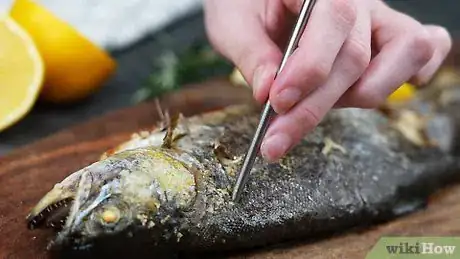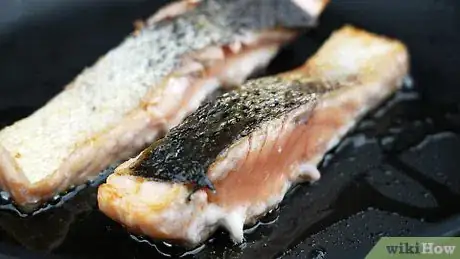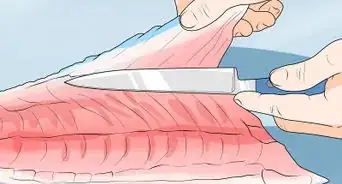This article was co-authored by wikiHow Staff. Our trained team of editors and researchers validate articles for accuracy and comprehensiveness. wikiHow's Content Management Team carefully monitors the work from our editorial staff to ensure that each article is backed by trusted research and meets our high quality standards.
There are 7 references cited in this article, which can be found at the bottom of the page.
The wikiHow Video Team also followed the article's instructions and verified that they work.
This article has been viewed 41,708 times.
Learn more...
Pan-seared, butter glazed, grilled, broiled, baked—is there anything better than some deliciously tender fish? With a delicate texture, fish is easy to overcook. But it’s also really important that it’s cooked all of the way through to avoid potential food poisoning. Luckily, it’s actually pretty easy to check if fish is cooked, and there are a few different ways you can do it.
Steps
Warnings
- Undercooked fish can contain harmful bacteria. Never eat fish unless you know for sure that it’s fully cooked.[11]⧼thumbs_response⧽
References
- ↑ https://www.bhg.com/recipes/fish/basics/how-to-know-fish-is-done/
- ↑ https://www.finecooking.com/article/how-to-tell-when-fish-is-truly-cooked
- ↑ https://www.seafoodnutrition.org/seafood-101/cooking/how-do-i-know-when-my-fish-is-cooked/
- ↑ https://www.bonappetit.com/story/how-to-tell-if-salmon-is-cooked
- ↑ https://www.yummy.ph/lessons/cooking/how-to-tell-if-fish-is-overcooked-a00249-20180909
- ↑ https://www.bonappetit.com/story/how-to-tell-if-salmon-is-cooked
- ↑ https://www.southernliving.com/seafood/fish/how-to-tell-when-salmon-is-done
- ↑ https://www.seafoodnutrition.org/seafood-101/cooking/how-do-i-know-when-my-fish-is-cooked/
- ↑ https://www.yummy.ph/lessons/cooking/how-to-tell-if-fish-is-overcooked-a00249-20180909























































